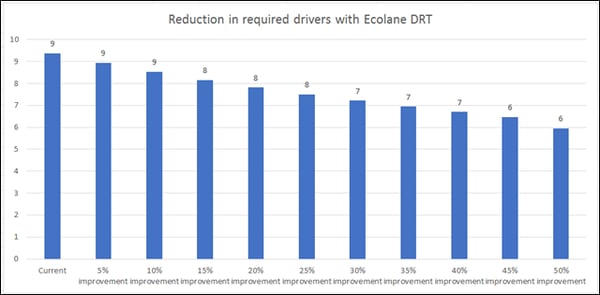The Golden Age of City Bus Drivers
It was not that long ago that driving a city bus was considered a stable profession and a decent way to earn a middle-class living and a stable retirement via a public-sector pension. It didn’t necessitate a college degree to enter the field and drivers could still comfortably purchase a house, raise a family of four, take occasional vacations, and save for their children’s college education.
A Bleak Outlook: Fewer Drivers and More Riders
Today, however, the outlook is much different for those entering the workforce. Driver incomes, although above average in the U.S., have had difficulty keeping up with inflation. Lower entry-level paychecks and the responsibility to pay fees to earn a commercial driver’s license have proven to be a burden on young people entering the workforce. As a result, fewer people are considering this line of work and that has created a driver shortage across the country. With fewer drivers on the road and fewer people becoming drivers, while the demand for public transportation is on the rise, it is a recipe for disaster. Agencies will continue to struggle to meet the demands of their riders unless they have the right tools to address this issue.
Light at the End of the Tunnel: Leveraging Transit Solutions
Agencies across the country report difficulty filling driver route gaps, less than stellar on-time performance metrics, and incomplete reporting. Transit, paratransit, and NEMT organizations are looking ahead by seeking automated routing and scheduling software solutions in place of performing manual entry and creating hardcopy manifests in advance of the day of service.
It has been shown that software that operates in a real-time environment can help mitigate many of these issues created by the driver shortage, such as missed pick-ups, loss in the quality of service and safety, and issues with customer retention. In fact, agencies find they have the potential to increase their production because the demand-response system is more efficient than the using prescheduled paper manifests that do not account for sudden changes in the day. Drivers need only to learn and use the mobile data tablets in their vehicles, which continuously updates and uses GPS technology.
Ecolane Demand-Responsive Transportation (DRT) Return on Investment and Results
The sample below is based off 1,000 trips per day with drivers working an average of eight service hours. As efficiency improves, the RPH increases while the number of service hours and drivers needed both decrease. This is possible because the DRT system is intuitive.



You might think these numbers reflect the best case scenario, but in fact, they reflect the average results. Ecolane recently conducted a study of the RPH increase experienced by transit agencies replacing their legacy system with Ecolane’s DRT software. Compared to all other major software vendors, Ecolane delivered an average RPH increase of 44 percent to as high as 151 percent. That is an impactful difference.
With fewer drivers entering the field and more riders needing service, it could be devastating to agencies that are unprepared. It is important to have autonomous, adaptable software to meet the demands of the market.
About the Author

Ecolane
Read Ecolane's blog articles for perspective, opinion and information on transit and paratransit issues.
%20(200%20x%20100%20px).png)
